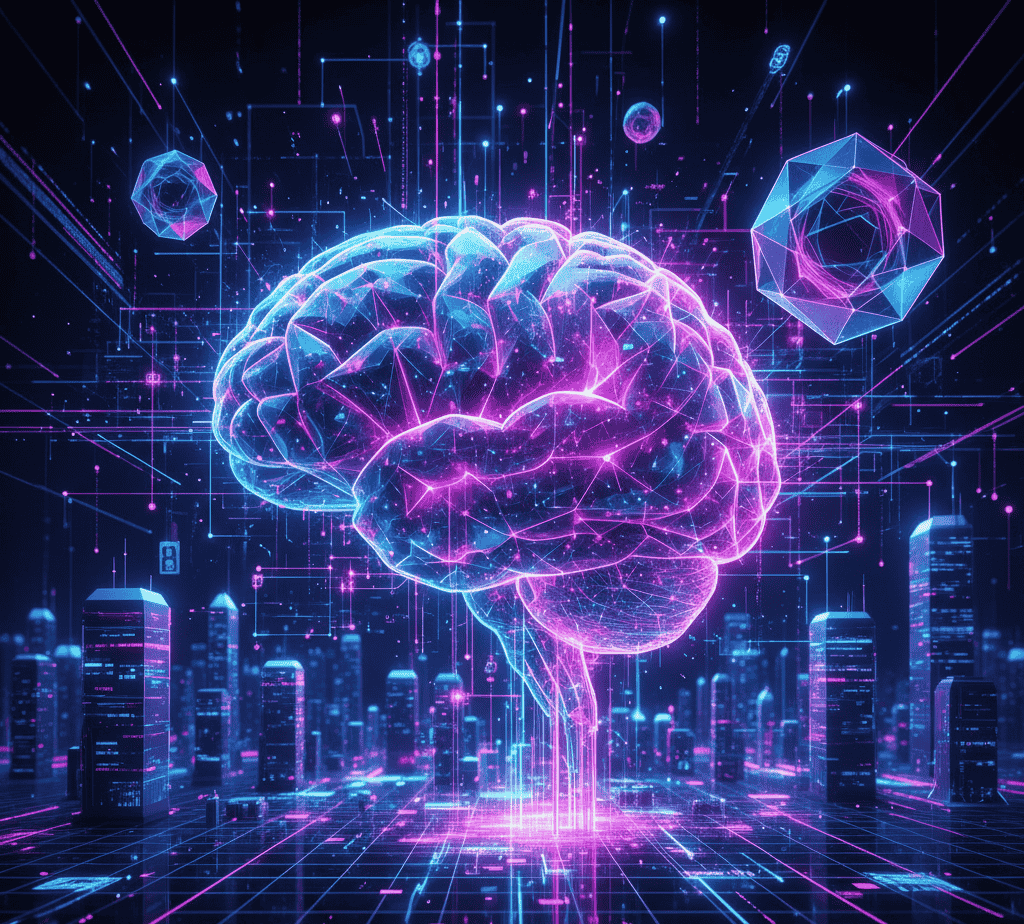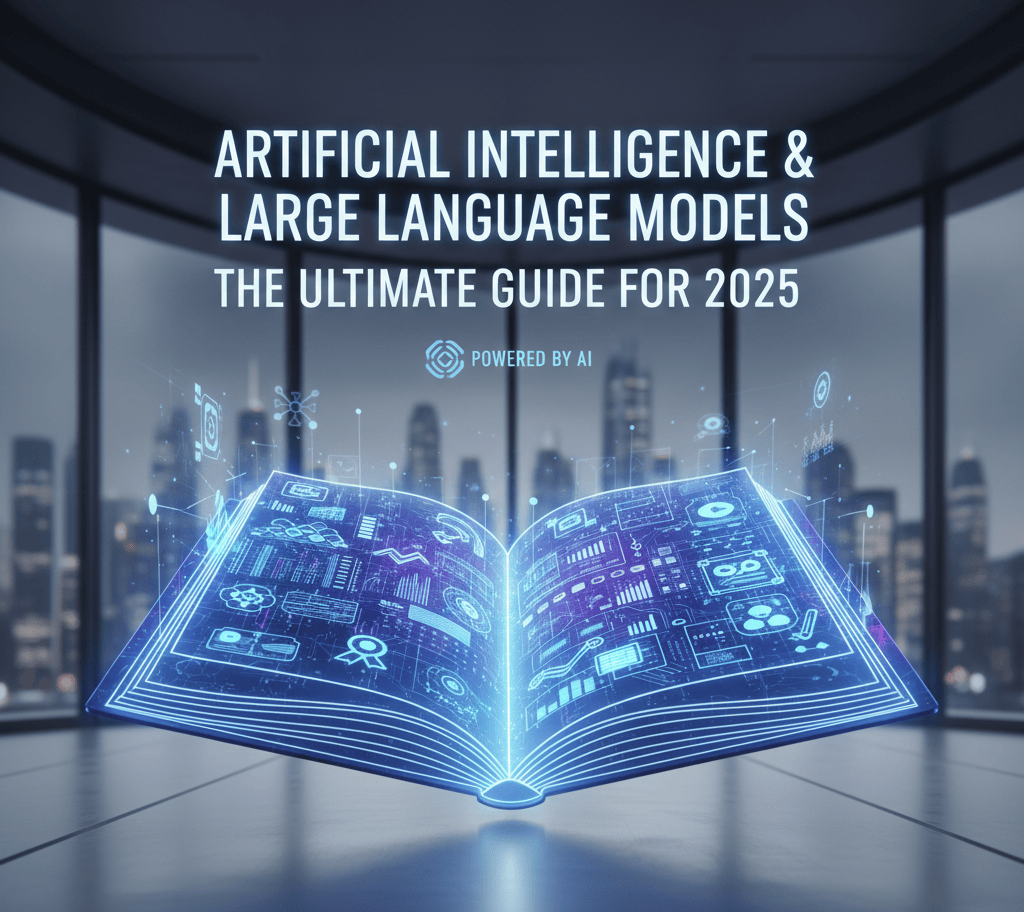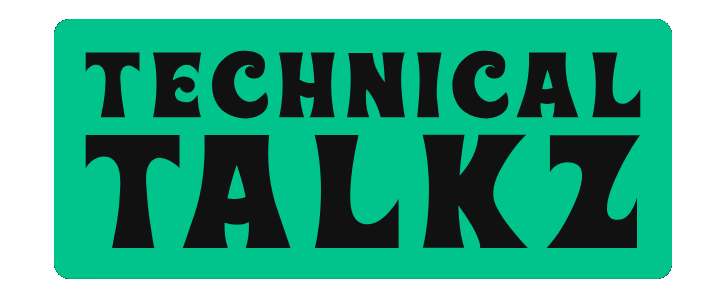Introduction
Artificial Intelligence (AI) has moved from the realm of science fiction into a cornerstone of modern technology. Over the last decade, AI has evolved rapidly, affecting every industry from healthcare and finance to entertainment and education. One of the most significant breakthroughs in AI in recent years is the development of Large Language Models (LLMs), which are capable of understanding, generating, and interacting with human language in unprecedented ways.
LLMs like OpenAI’s GPT series have revolutionized the way humans interact with machines, making AI more intuitive, accessible, and human-like than ever before. These models power chatbots, virtual assistants, automated content creation tools, translation services, and even coding assistants.
This blog explores AI and LLMs in depth, their applications, challenges, ethical considerations, and the future landscape of human–machine collaboration.
1. What is Artificial Intelligence (AI)?
Artificial Intelligence refers to machines and systems that can perform tasks traditionally requiring human intelligence. These tasks include reasoning, problem-solving, learning, decision-making, and language understanding. AI is not a single technology but a combination of algorithms, data, and computing power that enables machines to perform complex tasks autonomously or semi-autonomously.
Types of AI
- Narrow AI (Weak AI):
- Designed for a specific task or a set of related tasks.
- Examples: Virtual assistants (Siri, Alexa), recommendation engines, autonomous vehicles.
- General AI (Strong AI):
- Hypothetical AI that can perform any intellectual task a human can do.
- Currently, it does not exist but remains the ultimate goal of AI research.
- Superintelligent AI:
- A theoretical AI that surpasses human intelligence in every aspect.
- Raises profound ethical, societal, and safety questions.
Key Components of AI
- Machine Learning (ML): Systems that learn from data without explicit programming.
- Deep Learning (DL): A subset of ML using neural networks with multiple layers to model complex patterns.
- Natural Language Processing (NLP): Enables machines to understand and interpret human language.
- Computer Vision: Enables machines to recognize and process visual information.
- Robotics: Integration of AI in machines to perform physical tasks.
2. Understanding Large Language Models (LLMs)
Large Language Models (LLMs) are a type of AI that specializes in understanding and generating human language. These models are trained on massive datasets containing text from the internet, books, articles, and other sources, allowing them to predict and generate coherent and contextually relevant text.
How LLMs Work
LLMs use deep learning algorithms, particularly transformer architectures, to process language. The transformer model allows the AI to understand context, relationships, and nuances in text, making it capable of:
- Generating human-like responses
- Translating languages
- Summarizing long texts
- Writing creative content
For example, GPT-4, one of the latest LLMs, has billions of parameters that allow it to simulate understanding of complex topics and conversations.
Popular LLMs
- GPT (OpenAI): Chatbots, content creation, and coding assistance.
- BERT (Google): Optimized for understanding language context in search engines.
- LLaMA (Meta): Efficient LLM for research and enterprise applications.
- Claude (Anthropic): Focused on safe and aligned AI responses.
3. Applications of AI and LLMs
AI and LLMs are no longer just theoretical; they are actively transforming industries worldwide.
AI in Business
- Automates repetitive tasks
- Enhances decision-making with predictive analytics
- Improves customer support with AI chatbots
AI in Healthcare
- Assists in medical diagnosis using imaging and data analysis
- Predicts disease outbreaks
- Personalizes treatment plans with AI-driven insights
AI in Education
- Provides personalized learning experiences
- Automates grading and feedback
- Supports language learning with LLM-based tutors
AI in Content Creation
- Writes articles, scripts, and blogs
- Generates images, videos, and audio
- Translates and localizes content for global audiences
AI in Daily Life
- Virtual assistants like Alexa, Siri, and Google Assistant
- Smart home automation
- AI-powered recommendation systems on Netflix, YouTube, and Spotify
4. Benefits of LLMs
- Efficiency: LLMs can generate content faster than humans.
- Accessibility: Makes information and communication easier across languages.
- Scalability: Can handle large volumes of text for businesses.
- Creativity: Assists in writing, designing, and ideation.

5. Challenges and Limitations
Despite their advantages, AI and LLMs have limitations:
- Bias: LLMs may reflect societal biases present in training data.
- Misinformation: Can generate plausible-sounding but false content.
- Energy Consumption: Training large models requires immense computational resources.
- Dependence on Data: LLMs require vast amounts of high-quality data to function effectively.
6. Ethical Considerations
As AI grows, ethical concerns are critical:
- Privacy: Handling sensitive personal data responsibly
- Transparency: Clear understanding of how AI makes decisions
- Accountability: Defining who is responsible for AI actions
- Job Displacement: Preparing society for AI-driven automation
7. The Future of AI and LLMs
The AI landscape is evolving rapidly:
- AI-Augmented Humans: AI assisting humans in decision-making, creativity, and research
- Multimodal AI: Combining text, images, and video understanding for richer interactions
- Smarter LLMs: Capable of reasoning, fact-checking, and self-improvement
- Global AI Adoption: Expanding AI usage across industries worldwide
8. How Businesses Can Leverage AI and LLMs
- Customer Service: Deploy chatbots for 24/7 support
- Content Marketing: Automate blogs, social media, and ads
- Data Analytics: Predict trends and consumer behavior
- Product Development: Enhance features using AI insights
9. AI Tools and Platforms
- OpenAI GPT: Content generation, chatbots, coding assistant
- Google Cloud AI: NLP, vision, and translation APIs
- Microsoft Azure AI: Enterprise-grade AI solutions
- Hugging Face: Open-source AI models and LLMs for developers
Conclusion
Artificial Intelligence and Large Language Models are reshaping how humans interact with technology. From automating tasks to enhancing creativity, AI is no longer just a tool — it’s a collaborator. With ethical use, strategic adoption, and continuous innovation, AI and LLMs will define the next era of human-machine intelligence.
The future is AI-driven, human-centered, and limitless in potential.


